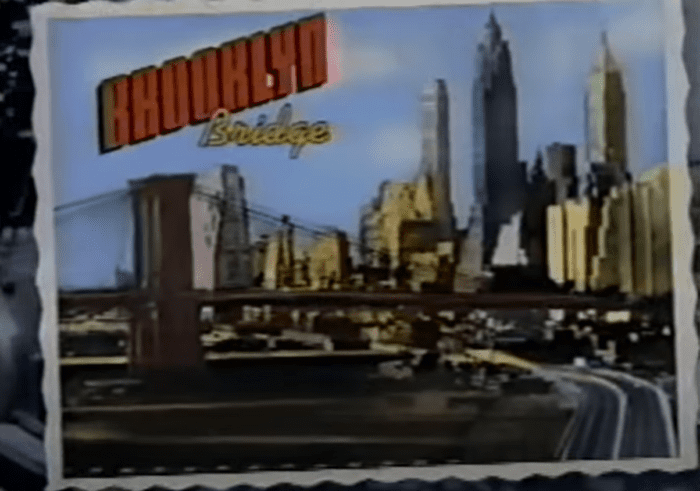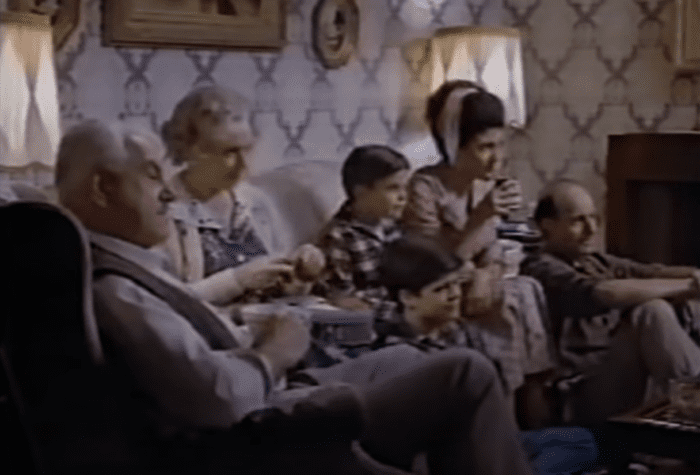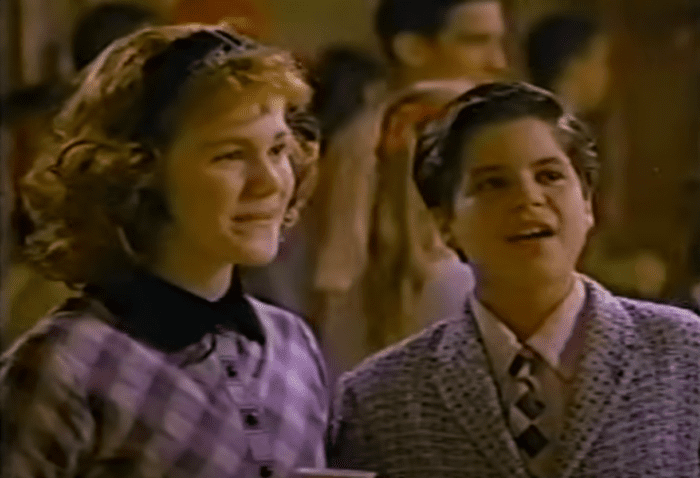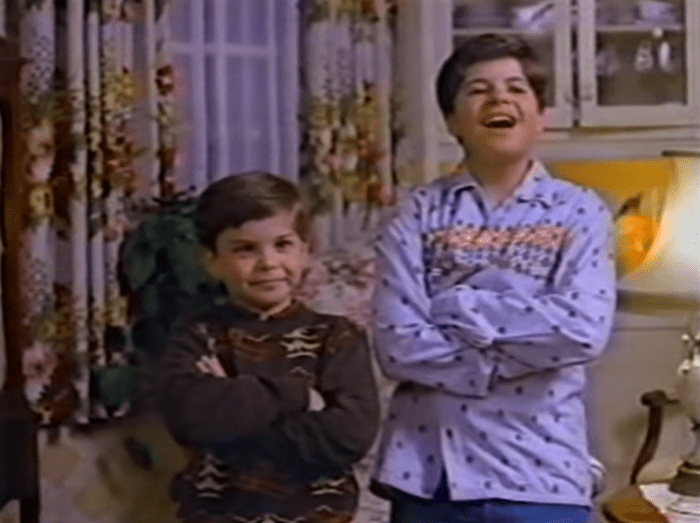In the late-1980s and early-1990s, producer and writer Gary David Goldberg wasn’t sure he wanted to work on television. And why would he need to? The acclaimed producer just spent seven years producing the classic sitcom Family Ties. The deal to syndicate that show is a show-biz legend, with some noting it made him a multi-millionaire.
But, Jeff Sagansky, then president of CBS, wanted to work with him on something. Goldberg had an idea, but it came with a simple codicil: either Sagansky had to order 13 episodes on the air, or not do it all. The pitch was for a show about a Jewish family’s life in Brooklyn, New York during the mid-1950s. Thankfully, Sagansky said yes. And to date, Gary David Goldberg is the only person to successfully sell anyone the Brooklyn Bridge.
Brooklyn Bridge was a semi-autobiographical series for Gary David Goldberg, centering around the life of Alan Silver and his family, and running from 1991 to 1993. While the show is labeled as a sitcom, it’s more than comedy. It doesn’t just have humorous situations befalling the Silver family, nor does it have the introspectively dramatic and poignant issues moments in the original run of Roseanne. Instead, the show reminds me of Hey, Arnold. Not only because the grandparents are hilarious voices of sometimes out-of-touch reason, but because the episodes are a slice of life.
The show’s strength is its sense of realism. The situations don’t come from the what-ifs of life like Seinfeld, but from what happened. In one episode, we see Alan’s grandmother, Sophie, brilliantly portrayed by Marion Ross of Happy Days, hosting a funeral for a much despised relative. Unfortunately, the funeral is the same day Alan has tickets to see the Dodgers. Watching Alan have to decide whether to make his grandmother happy by sticking around or see the team he loves creates a sense of agony viewers might recall from their childhoods. Perhaps, that’s the show’s ultimate strength, being rooted in a place we’ve all known well: childhood.
I’m a skeptical television watcher, so when I first heard of this show, I wasn’t sure I’d find any love for it. Mostly because I thought of it as a family show. Family shows are great, but when I think of family comedy in that era of television, I think of the icky sweet moments that dominated television. I get the image of the late Bob Saget sitting down with the Olsen twins in Full House to discuss that episode’s lesson, or Reginald VelJohnson talking to Eddie and Laura about their behavior in Family Matters. But, I forged ahead, thinking if I liked Spin City, I’d like this. I was so right.
Just Over the Brooklyn Bridge

Like every good show, the theme song is key. And if you want music that captures the beautiful melancholia of yesterday, you get Marvin Hamlisch to compose the music. Aside from writing and composing the Brooklyn Bridge theme song, he is better known for scoring such films as The Way We Were and The Prisoner of Second Avenue. This little moment in Hamlisch’s storied career can only be described in the words of John Keats: “A thing of beauty is a joy forever.” Most composers go with something that matches the show’s tone, whether it’s Al Jarreau’s “Moonlighting,” for the show of the same name, or “Love Is All Around” for The Mary Tyler Moore Show.
But Alan and Marilyn Bergman, who wrote the lyrics, took a different approach to Brooklyn Bridge‘s theme song. Instead of something funny or getting you in the mood to laugh, it’s a song that makes you think of the past. It’s a jazzy up-tempo song that creates a beautiful melancholia in someone’s mind. Combined with Gary David Goldberg’s actual family photos scrolling along and Art Garfunkel’s soulful voice, the music makes the viewer think of the place they called home in their bygone days. It brings to mind hours spent playing baseball in the street or doodling in chalk on the sidewalk. It’s almost like preparing to immerse yourself in a memory.
Art Garfunkel’s soulful vocals make this one of the best theme songs I’ve ever heard. It’s not just a song about some show. It’s a song about the memory of childhood, and the people you knew then you who might have fallen out of touch with. The song puts you in a place to watch a show that is set not just in the past, but is about someone’s past.
The Silvers of Brooklyn

Brooklyn in the 1950s; Jackie Robinson was cementing the Dodgers’ place in history before they moved to Los Angeles, the New York Aquarium moved to Coney Island, and after a labor strike, the Brooklyn Daily Eagle ceased publication. It was also the same era when Brooklyn Bridge took place. The show primarily takes place in a Brooklyn apartment building, where Alan Silver lives with his parents, Phyllis and George (played by Amy Aquino and Peter Friedman, respectively), his little brother Nathaniel ‘Natey’ (played by Matthew Louis Siegel), and his grandparents, Sophie and Jules (played by Marion Ross and Louis Zorich).
Much of the show focuses on Alan’s life growing up in Brooklyn and all the little idiosyncrasies that go with it. This might range from him trying to be a good friend, to learning why being divorced is so awful. As I said, the organic nature of the show’s situations makes it a more relatable show than most. That and the timeless issues we face.
The pilot episode, “When Irish Eyes are Smiling,” features a scene with Alan desperately asking his mother for a phone in their apartment. Why? So he can talk to a girl without having his grandparents or other family members in the background listening in.
Unlike Goldberg’s previous opus Family Ties, this show doesn’t feature the differences between kids and their parents. Nor, like Gilmore Girls, does it show how kids become their parents. These relationships aren’t allegories of developmental change or familial history. Instead, the kids are kids, and the parents are parents. Alan and his little brother Natey are both smart kids with a love of sports. Phyllis and George aren’t unreasonable; nor do they let their parents dominate how they parent. And, Sophie and Jules are immigrants still absorbing all the changes America presents them.
The interesting thing about this show is there are so many characters and, while Amy Aquino and Peter Friedman’s Phyllis and George missed a few episodes, there doesn’t seem to be much of a challenge in servicing each character. Everyone is funny in their own right, with plenty of dialogue that makes their presence in the episode important to the story. There are plenty of shows (cough The West Wing) with large casts of great talent (cough NewsRadio) that underused members of the cast to a point where they’d want to leave. I’m happy this isn’t one of them.
Beyond the dialogue and the acting, the show’s layout helps absorb the viewer into the stories. For starters, this show is a single-camera series with movie-quality filming and sets. In his Archive of American Television interview, Goldberg said each episode was supposed to be like creating a 23-minute movie. He nailed it.
From the large staircases and hallways of the Silver’s apartment building to the different locations across the show, you feel the set designers have done their homework. Where That ’70s Show creates that vibe of the ’70s, Brooklyn Bridge immerses you in ’50s culture. But, there’s more to it than just good costumes and excellent accent work. The show is a celebration of Jewish culture too. In some episodes, Jules is reading a Yiddish newspaper, and in the previously mentioned funeral episode, we hear a Yiddish prayer without subtitles.
The show doesn’t hold back on what it’s about, especially when it comes to love.
A Romance Grows in Brooklyn

One central plot to Brooklyn Bridge is Alan’s love for a girl who goes to a nearby Catholic school, Katie Monahan. Alan and Katie are quite the cute couple, and while he’s not always the best boyfriend, they work well together. It’s not the kind of love you see on so many sitcoms, where kids are all confused because of the most likely damaged relationships of their parents. It’s the innocent childhood love where you feel the power to say or do anything to make that other person happy.
But, Alan and Katie’s love comes to a head in the two-part episode, “The War of the Worlds.” In this episode, Katie’s father, Patrick, says she and Alan shouldn’t see each other. Why? Because she’s Catholic and he’s Jewish. While Alan is heartbroken about this, he’s shocked to find his grandmother Sophie and other family members feel similarly. But, he’s determined to get the girl. How you might ask?
A get-to-know-you dinner between both families at a Chinese restaurant. What could go wrong?
This is where you have to admire the brilliance of Goldberg, director Sam Weisman, and the team of editors who put this episode together. The preparation of both families going to dinner is reminiscent of West Side Story. This comparison is only buoyed by “Tonight” playing over the scene.
It’s oddly reminiscent of the school dance between the Jets and the Sharks. What seem like innocuous tasks are soldiers and generals preparing for what could be a war. I say the school dance scene because what looks like a harmless activity symbolizes the ideological struggle and differences between the two groups. I am reminded of the Sharks’ girls lined up in a row waving their hands and shimmying in their gowns. They don’t come off so much as dancing young women; rather they appear as a frontline of battleships lined up on guard and poised to attack.
That’s what the closing to the first half of the episode is: a preparation for an attack. And, sure enough, the sparks between grandmother Sophie and Katie’s father Jack fly like bullets on a war-torn battlefield. The first part of the dinner is loaded with tension, as both families try to make conversation, but it’s awkward and strained. Sure, there’s help from both sides, but it does little good in the face of strong-willed forces, namely Sophie and Patrick. The dinner goes poorly and a stop-by from some rowdy family members of Alan doesn’t help.
Alan and Katie are ready to throw in the towel, with each going off with a respective parent to talk. But, just when all hope seems lost, the kids’ fathers discover common ground. They both grew up in Williamsburg and both knew someone there quite well from playing baseball. From pain, there is peace, and the families leave thinking, “They’re alright.” As much as the episode itself is quite the rollercoaster of events, the ending makes you realize why Brooklyn Bridge is so special.
Sophie, Alan and Nathaniel’s grandmother, is a Russian-Jewish immigrant set in her ways, as is Katie’s Irish-Catholic police officer father. But, by the episode’s end, Patrick is sitting at a record player listening to a Russian-Jewish folk song about a village’s ultimate destruction, while Sophie, teary-eyed, listens to a heartfelt rendition of “Danny Boy.” Each is listening to the music with such an open-hearted intent and understanding of the other’s culture.
To me, this moment redefines character growth.
Whenever I Think of Yesterday

What makes Brooklyn Bridge so unique is the same thing that separates shows like The West Wing, and Pushing Daisies from the rest of the pack—the way the passion of their creators bursts onto the screen. Sure, it’s not cheap and it’s not always what a network wants, but it’s what keeps people coming back.
Unfortunately, similar to Pushing Daises, Brooklyn Bridge met its end after only two seasons due to low ratings. A DVD collection of the show was supposed to be released, but a deal was never reached before the death of Gary David Goldberg in 2013. But, bootleg episodes can be found online, with many comments talking about the timelessness of the show. That’s because Brooklyn Bridge takes us back to the worlds of yesterday we all remember.

